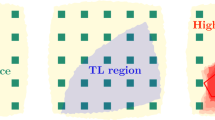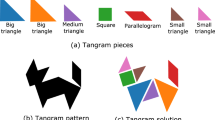Abstract
We present work that quantifies the disentanglement of the reconstruction of beta-variational auto-encoders (\(\beta \)-VAEs) varying the hyper-parameter \(\beta \) for three different input distributions (Hall, https://zenodo.org/record/8003522, 2023). Currently the majority use of VAEs are for image processing and little work has been done in the field of material science using this machine learning technique to create reconstructions to explore the search for new designs. This work highlights the importance of the distribution shape can be more important than the quantity of data in creating neural network reconstructions such as \(\beta \)-VAEs which has been used for this effort. Furthermore, this work highlights that the best disentangled reconstruction doesn’t necessarily create the best reconstruction.










Similar content being viewed by others
References
Hall J (2023) Beta-variational auto-encoder disentanglement with different input distributions for computational multi-modal particle packing. https://zenodo.org/record/8003522
Welling M, Kingma DP (2013) Auto-encoding variational bayes. arXiv:1312.6114
Rath SR (2020) Getting started with variational autoencoders using PyTorch. https://debuggercafe.com/getting-started-with-variational-autoencoders-using-pytorch/ [Online; accessed 29-Jan-2023]
Higgins I et al (2017) \(\beta \)-vae: learning basic visual concepts with a constrained variational framework. ICLR Conference Paper
Stein HS et al (2019) Machine learning of optical properties of materials–predicting spectra from images and images from spectra. Chem Sci 10:47–55
Groener AM, Richards RJ (2022) Conditional \(\beta \)-VAE for de novo molecular generation. arXiv:2205.01592
Gundersen K et al (2021) Semi-conditional variational auto-encoder for flow reconstruction and uncertainty quantification from limited observations. Phys Fluids 33:017119
Yu J et al (2022) Structure-aware conditional variational auto-encoder for constrained molecule optimization. Pattern Recogn 125:108581
Fardina FA, Shehu A (2022) Data size and quality matter: generating physically-realistic distance maps of protein tertiary structures. Biomolecules 12(7):908
Hall JR, Kauwe SK, Sparks TD (2021) Sequential machine learning applications of particle packing with large size variations. Integr Mater Manuf Innov 10:559–567
Mathieu E et al (2019) Disentangling disentanglement in variational autoencoders. arXiv: 1812.02833v3
de Rijke M, Sepliarskaia A, Kiseleva J (2021) How to not measure disentanglement. arXiv: 1910.05587
Gray R (1990) Entropy and information theory, 1st edn. Springer Verlag, Cham
Chen RTQ et al (2019) Isolating sources of disentanglement in VAEs. arXiv:1802.04942v5
Sikka H et al (2019) A closer look at disentangling in \(\beta \)-VAE. arXiv:1912.05127v1
Author information
Authors and Affiliations
Corresponding author
Ethics declarations
Conflict of Interest
On behalf of all authors, the corresponding author states that there is no conflict of interest.
Rights and permissions
Springer Nature or its licensor (e.g. a society or other partner) holds exclusive rights to this article under a publishing agreement with the author(s) or other rightsholder(s); author self-archiving of the accepted manuscript version of this article is solely governed by the terms of such publishing agreement and applicable law.
About this article
Cite this article
Hall, J.R., Sparks, T.D. A Case Study of Beta-Variational Auto-encoders, Disentanglement Impacts of Input Distribution and Beta-Variation Based Upon a Computational Multi-modal Particle Packing Simulation. Integr Mater Manuf Innov 12, 267–275 (2023). https://doi.org/10.1007/s40192-023-00306-6
Received:
Accepted:
Published:
Issue Date:
DOI: https://doi.org/10.1007/s40192-023-00306-6




